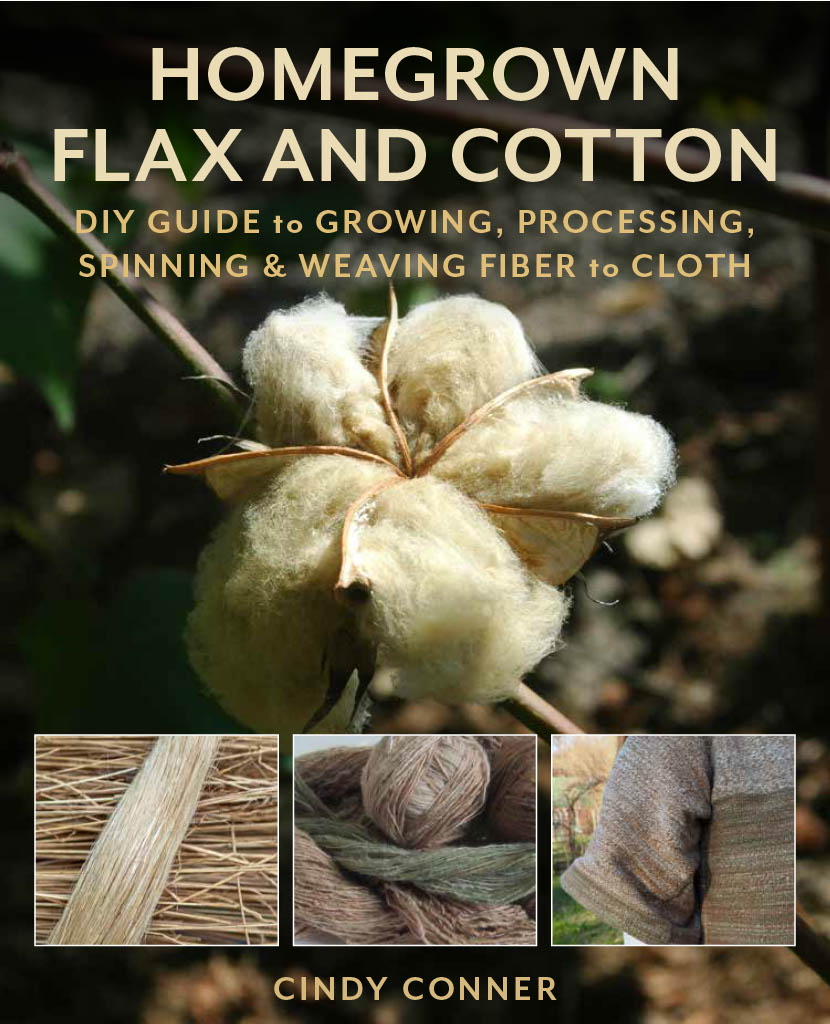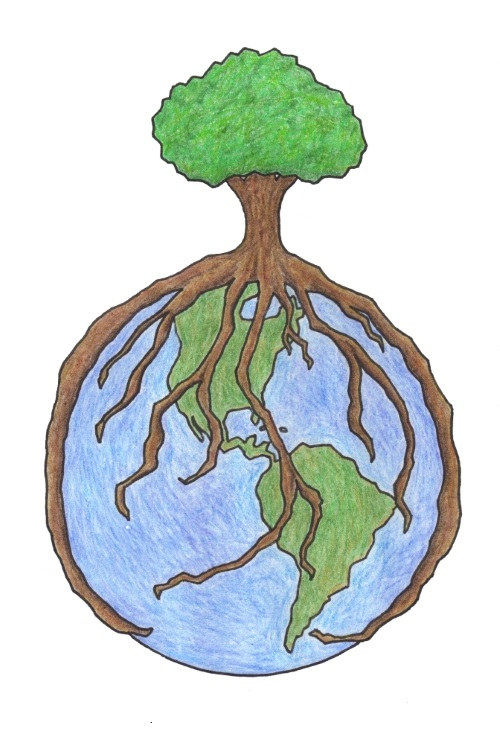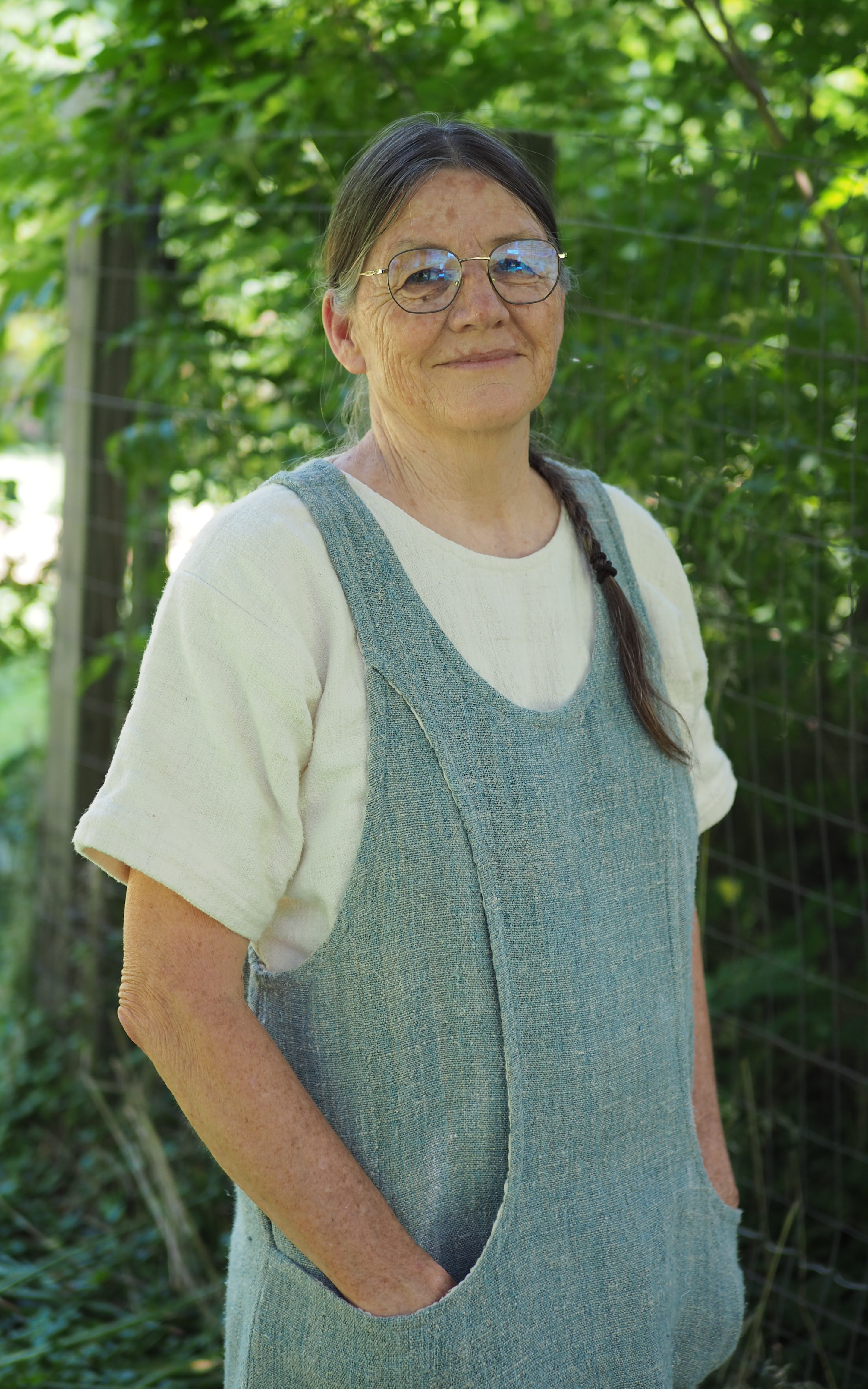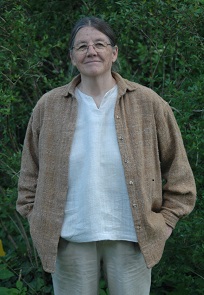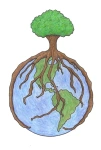 I usually write about food crops and soil building, but today I’m talking about fiber. I have begun to grow cotton and have learned to spin it using a spindle. Growing and using cotton is more than just a new craft for me. It adds diversity to my garden, which is important in a permaculture garden, and it helps me connect with factors beyond the garden. Plants are grown around the world for more things than food. If our gardens are to provide for us and if we are ever going to be free from corporate domination, we need to consider everything. From our plants we can get food, fuel, medicine, fiber, dyes, and so on. The movement to make available food grown in a sustainable manner to everyone is gaining momentum. What about obtaining our other needs from sustainable sources?
I usually write about food crops and soil building, but today I’m talking about fiber. I have begun to grow cotton and have learned to spin it using a spindle. Growing and using cotton is more than just a new craft for me. It adds diversity to my garden, which is important in a permaculture garden, and it helps me connect with factors beyond the garden. Plants are grown around the world for more things than food. If our gardens are to provide for us and if we are ever going to be free from corporate domination, we need to consider everything. From our plants we can get food, fuel, medicine, fiber, dyes, and so on. The movement to make available food grown in a sustainable manner to everyone is gaining momentum. What about obtaining our other needs from sustainable sources?
When India was a colony of Britain, Indian cotton was shipped to Britain and the Indians had to buy it back as fabric. Gandhi promoted spinning as an act of independence. If the Indians spun and used their own cotton, they would be free of British control of that resource. In fact, Gandhi had a contest to develop a small spinning wheel that was portable enough that people could easily spin in public and the box charka was born. What better act of nonviolent protest but to spin cotton into thread and yarn in public! Unfortunately, today Indian cotton farmers face another peril with the introduction of GMO cotton seeds. In 2000 I heard Vandana Shiva speak about the number of suicides among cotton farmers in India. They had been convinced to grow GMO cotton by Monsanto and things were not going well. The problems continue to this day. Please take the time to listen to her tell you about it here. Shiva’s organization Navdanya goes into these areas with open pollinated seeds to help the farm families recover.
In doing some research for this post I was heartened to find that there are projects underway to promote the sustainable growing of cotton around the world and in the U.S. You can find more about that at http://www.sustainablecottons.com/. Where is the fabric coming from for your cotton clothes? Begin looking for a Fairtrade label for cotton. Also, consider how the cotton you buy gets its color. Cotton grows naturally in more colors than white. Pakucho is the brand name of cotton from a project developed in Peru to revive the growing of colored cotton on small farms.

1 ounce green cotton fiber/seeds
In 2004 I came across an article in Spin-Off magazine about a woman who had grown the cotton that she then spun (with a spindle) and wove into fabric for a shirt. You can read “My Cotton Shirt” here. At least I knew that my idea of growing cotton and making a shirt out of it wasn’t totally crazy. I did grow some cotton around that time, but I didn’t know anyone who was spinning cotton and I was busy with other things, so the harvest was stored away. The only spinners I knew worked with wool and said that, since cotton had such a short fiber, it was really hard to spin. I figured that if spinning cotton was all I knew, spinning cotton would be my normal and that wouldn’t be a problem. After all, people have spun cotton down through the ages so I should be able to learn this. For the past two summers I grew both Erlene’s Green and Nankeen Brown cotton. The seeds came from Southern Exposure Seed Exchange the first year and I saved them after that. There are a lot of seeds in cotton. In one ounce of green cotton that I weighed, 75% of that ounce was 185 seeds and 25% of that ounce was fiber.
I turned to Joan Ruane to learn to spin the fiber into yarn, once I found her video Cotton Spinning With the Takli. A takli spindle is what is recommended for cotton and that’s what I’ve been using. My husband gave me her kit with fiber, spindle, and DVD as a gift and it was a great way to get started. It was very slow going at first, though. I had to remind myself of how it was when I taught myself to knit—only this seemed harder. Clothos Handspinners, a group of wonderful folks into handspinning, came to my rescue. At the first meeting I attended in November, 2011, Judith spent time teaching me some basics and I will be forever grateful. Most of the members show up with their spinning wheels, but there are some, like me, who are using a spindle. Most work in wool, but not exclusively. I am not interested in getting a wheel right now because I want to master the spindle. Besides, I want to see how much skill and knowledge I can gain with the least money spent. Another DVD that has helped me is Spinning Cotton by Stephanie Gaustad. If my garden DVDs have helped people as much as these cotton DVDs have helped me, I will be happy. My goal is to make a vest out of my homegrown, homespun cotton, so I’ll be learning to weave next. After that comes the shirt.

seeds and green spun cotton from 1 ounce fiber/seeds–plus spindle
Cotton needs hot weather and a lot of sun. The varieties I grow take 130 days to mature, but it differs by variety. Sea Island White requires 160 days. Start the seeds and set out transplants as you would tomatoes. I’ve heard of growing cotton in containers and bringing it inside when the weather turns cold if you live in a marginal climate. In my 2012 garden I harvested 2.5 pounds of green fiber and seed in an 80 ft.² bed. That works out to about .75 lb. fiber per 100 ft.² (and lots of seeds). The brown cotton harvest was equivalent to one pound fiber per 100 ft². I had 7-12 bolls on each plant. Now that I’m paying attention, I believe that I can better that harvest. The U.S. average is 1.7 pounds fiber per 100 ft². You could begin with just a few plants among your flowers.
 Growing colored cotton has been really interesting. After cotton has been spun, it needs to be boiled to set the twist. When you do that, the color deepens. The green spun cotton shown with the spindle and seeds is the same cotton that is shown as fiber in the other photo with the seeds. In the sample that I’ve knitted, the deep green and brown colors are the natural colors after boiling the spun fiber. The white is what I grew years ago with only an inkling of an idea that I might want to do this sometime.
Growing colored cotton has been really interesting. After cotton has been spun, it needs to be boiled to set the twist. When you do that, the color deepens. The green spun cotton shown with the spindle and seeds is the same cotton that is shown as fiber in the other photo with the seeds. In the sample that I’ve knitted, the deep green and brown colors are the natural colors after boiling the spun fiber. The white is what I grew years ago with only an inkling of an idea that I might want to do this sometime.
In 2007 a new charka was introduced in India. This e-charka allows the spinner to produce electricity while he/she spins. A battery stores the electricity to operate an LED light and a transistor radio. Spinning cotton by hand is still important in rural areas of India and elsewhere and this new charka will increase the quality of life for these spinners. Gandhi would be proud. For now, at least, I’ll stick with my spindle. Growing cotton and learning to spin it is a wonderful project. Doing it with children gives them a great glimpse into history. There are so many things you could talk about with them when you are working with the plants and fiber. As you spin your own homegrown fiber, keep in mind all those farmers who are keeping the old skills and seeds alive. Every good thought we have goes out as a ripple that eventually connects us all.
For more thoughts on growing and spinning cotton see http://www.motherearthnews.com/permaculture/grow-spin-cotton.aspx#axzz2LRWabZ00
Read Full Post »
